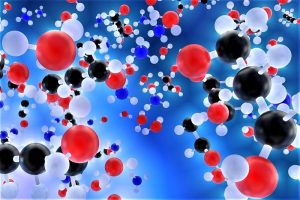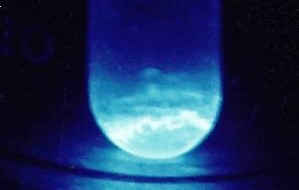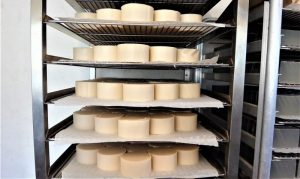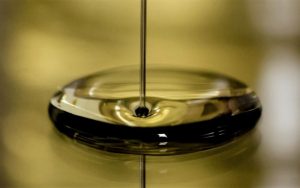Molar mass
In the area of chemistry, it is important to know the molar mass of the elements with which we are going to work in experiments in order to measure the exact weight of the matter present in the body or bodies that are going to interact in the research. The molar mass is linked to the weight of entities such as atoms, molecules, ions, etc., of each element. All elements have a different molar mass because their atoms have a different number of protons, electrons and neutrons, which affects their atomic masses. To calculate the molar mass, it is necessary to use of the periodic table of elements.

- Simbolo: M
- Unidad: kg/mol y g/mol
What is molar mass?
Molar mass is the relationship between the mass of a substance and the number of particles that make it up. It is expressed in kilograms per mole, but it is more common to see it presented in grams per mole (g/mol). Its calculation is of great importance in chemistry for the development of experiments with elements, compounds or mixtures of different substances.
What molar mass is used for
Knowing the molar mass allows us to: calculate the specific amount of a substance; analyze experiments results; calculate the percentage by mass; and understand the precise molar masses of complex molecules without directly experimenting with them.
Symbol of molar mass
The molar mass symbol is M. It is important not to confuse it with the molecular mass symbol which is m.
Units of molar mass
Its unit of measurement according to the international system is Kilogram per mole (kg/mol or kg x mol-1), but it is almost always expressed in grams per mole (g/mol).
How molar mass is calculated
The molar mass can be calculated from the atomic masses expressed in the periodic table of elements. It is almost never calculated directly.
It is important to mention that the constant value of a mole is 6.022×1023 this constant is called Avogadro number or constant.
Next we will present how it is calculated in elements0, compounds and mixtures.
In the elements
The molar mass of an element is given by the atomic weight of each element multiplied by the constant of the molar mass (6.022 x 1023). The numerical value of the molecular mass and the molar are equal. The difference is that the value of the atomic mass is expressed in units of atomic mass and the molecular mass refers to a single molecule; the molar mass corresponds to a molecule of molecules.
For example, to calculate the molar mass of hydrogen we must first look up its relative atomic mass in the periodic table. This is 1.007. The molecular mass of hydrogen is equal to the relative atomic mass by the number of grams /mol, in this case it is two because hydrogen is composed of two molecules. The formula would be:
- M of H= Atomic mass of hydrogen g/mol x 2
- M of H= 1.007g/mol x 2
- M of H= 2,014 g/mol (this is the mass of hydrogen in one gram/mol)
In the compounds
The molar mass of a compound is calculated by the sum of the standard atomic weights of the atoms forming it multiplied by the constant of the molar mass (6,002×1023).
For example, to calculate the grams mol of hydrochloric acid it is necessary to know the values of the elements that make up this compound in the periodic table. Hydrochloric acid consists of a hydrogen atom and a chlorine atom thus symbolized HCL. The value of the relative atomic mass of hydrogen is 1.007 of that of chlorine is 35.453 and its weights are 1.007 g/mol and 35.453 g/mol. The formula would be:
- M of HCL = M of H (1.007g/mol x 1) + M of CL (35.453 g/mol x 1)
- M HCL = 1.007 g/mol + 35.453 g/mol
- M HCL =36,460 g/mol (This is the mass of hydrochloric acid)
In the mixtures
The molar mass of a mixture is calculated by the molar fractions (Xi) of the compounds and their molar masses (Mi) or from the mass fraction (wi) of the compounds.
The formula for calculating the molar mass of the mixtures is MM = 1/∑ (Xi MMi)
For example, if we want to calculate the molar mass of a mixture of 181.463 g composed of 44.06844 g of ethanol, 18.0153 g of water and 119.38 g of chloroform.
The first step is to calculate the mass fraction of each of the substances.
The mass fraction of the substances is calculated by dividing the mass of the substance by the mass of the mixture.
The formula would be:
- Mass fraction of ethanol = 44,06844g / 181,463 g = 0,2428
- Water mass fraction = 18,0153 g / 181,463 g = 0,0992
- Mass fraction of chloroform = 119,38 g / 181,463 g = 0,6578
The second step is to apply the average molar mass formula using the formula
MM = 1/∑ (Xi MMi)
Where Xi = mass fraction of the substance and MMi = mass of the substance
- MM= 1/ (0,2428/44,6844 g/mol) + (0,0992 / 18,0153 g/mol) + (0,6578 / 119,38) )
- MM = 1/0.0165 g = 60.606 g/mol
Examples
Next, we will present the molar mass of some elements, gases and mixtures.
Example 1
The chemical formula for propane is C3H8:
- M C= 12,011 g/mol x 3 = 36,033
- M H= 1.007 x 8 = 8.056
- M C3H8= 36,003 g/mol + 8,056 g/mol
- M C3H8= 44,089 g/mol
Example 2
The chemical formula for sulfur is S16:
- M S= 32,065 g/molx 16
- M S = 513,04 g/mol
Example 3
The chemical formula for sulfuric acid is H2SO4:
- M H2 =1.007g/mol x 2 = 2.014 g/mol
- M S =32.066 g/mol x 1=32.066 g/mol
- M O4 = 15.999 g/mol x 4 = 63.997
- M of H2SO4 = 2.014 g/mol +32.066 g/mol+ 63.997 g/mol = 98.077 g/mol
Example 4
The chemical formula for calcium is Ca20:
- M Ca= 40.078 g/mol x 20 = 801,560 g/mol
Example 5
The chemical formula for magnesium is Mg 12:
- M Mg = 24.305 g/mol x 12 = 291.659 g/mol
Example 6
The chemical formula for glucose is C6H12O6:
- M C= 12.011 g/mol x 6 = 72.066 g/mol
- M H= 1.007 g/mol x 12 = 12.084 g/mol
- M O= 15.999 g/mol x 6 = 95.996g/mol
- M C6H12O6= 72.066 g/mol + 12.084 g/mol + 95.996g/mol =180,146
Example 7
The chemical formula of copper Cu29:
- M Cu= 63.546 g/mol x 29 = 1842.834 g/mol
Example 8
The chemical formula for aluminum is Al13:
- Al = 67.059 g/mol x 13 = 390.838 g/mol
How to cite this article?
Briceño V., Gabriela. (2019). Molar mass. Recovered on 3 May, 2025, de Euston96: https://www.euston96.com/en/molar-mass/









